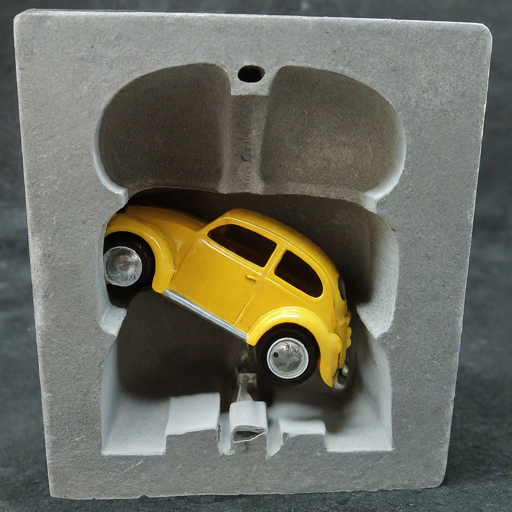Introduction to Injection Molding
Injection molding is a manufacturing powerhouse, churning out everything from tiny medical components to massive car parts. It’s a process that’s been around for decades, but it’s constantly evolving. As someone who’s been in the trenches for 20 years, I’ve seen firsthand how this industry has transformed. Let’s dive into the world of injection molding and uncover its secrets.
The Injection Molding Process: A Step-by-Step Breakdown
Understanding the injection molding process is crucial for anyone in the industry. Here’s a breakdown of the key steps:
- Material preparation: Plastic pellets are dried and mixed with additives if necessary. This step ensures the material is in optimal condition for molding.
- Melting: The pellets are heated and melted in the injection barrel. The temperature must be carefully controlled to achieve the right viscosity.
- Injection: The molten plastic is forced into the mold cavity at high pressure. This stage requires precise control of speed and pressure to fill the mold completely.
- Cooling: The part cools and solidifies inside the mold. Proper cooling is essential for maintaining part quality and dimensional stability.
- Ejection: The finished part is ejected from the mold. This step must be executed carefully to avoid damaging the part.
Each step plays a vital role in producing high-quality parts. Get one wrong, and you’ll end up with a pile of scrap instead of perfect products.
Choosing the Right Materials for Your Project
Selecting the right material can make or break your injection molding project. It’s not just about picking a plastic and calling it a day. You need to consider:
- Mechanical properties: Strength, flexibility, and impact resistance are crucial factors. The material you choose must be able to withstand the stresses it will encounter during use.
- Thermal characteristics: How will the material behave under different temperatures? This is particularly important for parts that will be exposed to heat or cold during their lifecycle.
- Chemical resistance: Will your part need to withstand exposure to certain chemicals? Some plastics degrade quickly when exposed to certain substances, while others are highly resistant.
- Cost: Budget constraints often play a significant role in material selection. However, it’s important to balance cost with performance requirements.
Remember, the cheapest option isn’t always the best. Sometimes, investing in a higher-quality material can save you money in the long run by reducing defects and improving part performance.
Optimizing Mold Design for Efficiency
A well-designed mold is the cornerstone of efficient injection molding. It’s not just about creating a cavity that matches your part’s shape. You need to consider:
- Gate location and size: This affects how the plastic flows into the mold. Proper gate design can reduce defects and improve part quality.
- Cooling channels: Proper cooling can significantly reduce cycle times. The layout of cooling channels can have a major impact on part quality and production efficiency.
- Ejector pin placement: Ensure smooth part removal without causing damage. Poorly placed ejector pins can leave marks or even damage the part during ejection.
- Venting: Adequate venting prevents air traps and improves part quality. Without proper venting, you may encounter issues like burn marks or incomplete fills.
- Parting line location: This impacts the part’s appearance and ease of ejection. A well-designed parting line can minimize flash and make post-molding operations easier.
Investing time in mold design can pay off big time in production efficiency and part quality. If you’re looking for expertise in this area, you might want to check out some of the top injection mold manufacturers in China who have a reputation for innovative mold designs.
Common Injection Molding Defects and How to Avoid Them
Even with the best preparation, defects can still crop up. Here are some common issues and how to tackle them:
- Sink marks: Often caused by insufficient cooling or excessive material thickness. These can be addressed by adjusting cooling time or redesigning the part to have more uniform wall thickness.
- Flash: Excess material that seeps out of the mold, usually due to excessive injection pressure or worn molds. Regular mold maintenance and proper pressure settings can help prevent flash.
- Short shots: When the mold doesn’t fill completely, often due to insufficient injection pressure or material. This can be resolved by increasing injection pressure or temperature, or by improving mold venting.
- Warping: Uneven cooling or incorrect gate placement can cause parts to warp. Proper mold design and cooling system optimization can help prevent warping.
Identifying these issues early and understanding their root causes is key to maintaining high-quality production.
Sustainable Practices in Injection Molding
Sustainability isn’t just a buzzword; it’s becoming a necessity in our industry. Here’s how we can make injection molding more environmentally friendly:
- Use of recycled materials: Many plastics can be recycled and reused in injection molding. This not only reduces waste but can also lower material costs.
- Energy-efficient machines: Modern injection molding machines consume less energy than their predecessors. Investing in new equipment can lead to significant energy savings over time.
- Waste reduction: Implementing lean manufacturing principles can significantly reduce waste. This includes optimizing production processes to minimize scrap and rework.
- Bio-based plastics: These materials offer a more sustainable alternative to traditional petroleum-based plastics. While they may have different processing requirements, they can significantly reduce your carbon footprint.
Embracing sustainable practices isn’t just good for the planet; it can also improve your bottom line by reducing material and energy costs.
Advanced Techniques in Injection Molding
As technology advances, so does injection molding. Here are some cutting-edge techniques that are shaping the future of our industry:
- Gas-assisted injection molding: Used to create hollow parts, reducing material usage and weight. This technique is particularly useful for large parts that would otherwise be prone to sink marks or warping.
- Multi-material molding: Allows for the creation of complex parts with different materials in a single shot. This can eliminate the need for assembly and create parts with unique properties.
- Micro-molding: Produces incredibly small parts for industries like medical and electronics. This technique requires specialized equipment and extreme precision.
- In-mold labeling: Integrates labels or graphics directly into the molded part. This can improve durability and reduce secondary operations.
These advanced techniques open up new possibilities for product design and manufacturing efficiency.
The Role of Automation in Modern Injection Molding
Automation is revolutionizing the injection molding industry. Here’s how:
- Robotic part removal: Increases efficiency and reduces the risk of part damage. Robots can work continuously without fatigue, improving overall productivity.
- Automated quality control: Vision systems can inspect parts for defects in real-time. This allows for immediate detection and correction of issues, reducing scrap and improving overall quality.
- Predictive maintenance: AI-powered systems can predict when machines need servicing. This can prevent unexpected downtime and extend the life of your equipment.
- Process monitoring: Advanced sensors provide real-time data on machine performance. This allows for fine-tuning of processes and quick response to any deviations.
While automation requires significant upfront investment, it can lead to substantial long-term savings and quality improvements.
Choosing the Right Injection Molding Partner
Selecting the right injection molding partner is crucial for your project’s success. Here’s what to look for:
- Experience: A track record of successful projects in your industry. Look for a partner who understands the specific challenges of your sector.
- Technical capabilities: The right equipment and expertise for your specific needs. This includes not just molding machines, but also design software, quality control systems, and more.
- Quality control: Rigorous quality assurance processes to ensure consistent results. Ask about their quality certifications and inspection procedures.
- Communication: Clear, responsive communication throughout the project. A good partner should be proactive in keeping you informed about progress and any issues that arise.
- Location: While global sourcing is common, there are benefits to working with local injection molding facilities, such as faster turnaround times and easier collaboration.
Remember, the cheapest option isn’t always the best. Look for a partner who understands your needs and can deliver quality results consistently.
The Future of Injection Molding
As we look to the future, several trends are shaping the injection molding industry:
- Industry 4.0: The integration of smart technologies and data analytics is transforming production processes. This includes everything from AI-powered process optimization to interconnected smart factories.
- 3D printed molds: Rapid prototyping of molds can significantly reduce development time. This is particularly useful for small production runs or highly customized parts.
- Nanotechnology: The use of nanoparticles in plastics is opening up new possibilities for material properties. This could lead to plastics with enhanced strength, conductivity, or other unique characteristics.
- Customization: Increased demand for personalized products is driving innovations in small-batch production. This requires flexible manufacturing systems and quick changeover capabilities.
Staying ahead of these trends can give you a competitive edge in the rapidly evolving world of injection molding.
Conclusion: Mastering the Art and Science of Injection Molding
Injection molding is a complex process that requires a blend of scientific knowledge and practical experience. From material selection to mold design, from troubleshooting defects to embracing cutting-edge technologies, there’s always something new to learn in this dynamic field.
As we’ve explored in this guide, success in injection molding comes down to attention to detail, continuous learning, and a willingness to adapt to new technologies and practices. Whether you’re a seasoned pro or just starting out, there’s always room for improvement and innovation in the world of injection molding.
Remember, the key to success lies not just in mastering the technical aspects of injection molding, but also in building strong partnerships, staying ahead of industry trends, and never losing sight of the end goal: producing high-quality parts that meet your customers’ needs.
So, keep experimenting, keep learning, and keep pushing the boundaries of what’s possible with injection molding. The future of manufacturing is in your hands!
| Aspect | Traditional Injection Molding | Advanced Injection Molding |
|---|---|---|
| Materials | Limited to single material | Multi-material capabilities |
| Automation | Manual operations | Fully automated processes |
| Quality Control | Manual inspection | AI-powered real-time monitoring |
| Sustainability | High waste production | Eco-friendly materials and processes |
| Customization | Limited to large batches | Capable of small, customized runs |



More Stories
PVD-Coated vs. Traditional Furniture: Who win?
PCD Pharma Franchise Company in Baddi: Oasis Bio Bloom
Brass Hose Fittings: Perfect for Any Industry